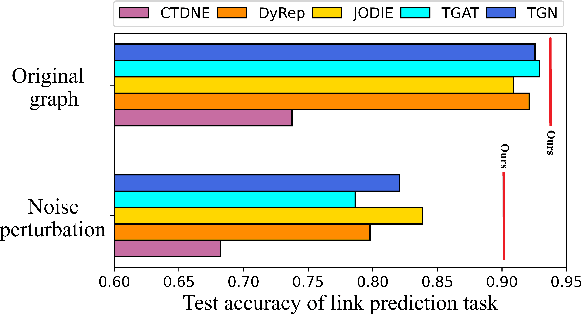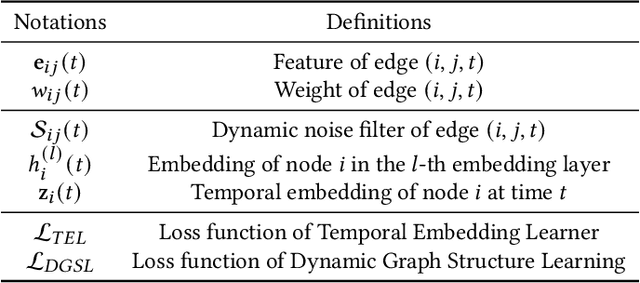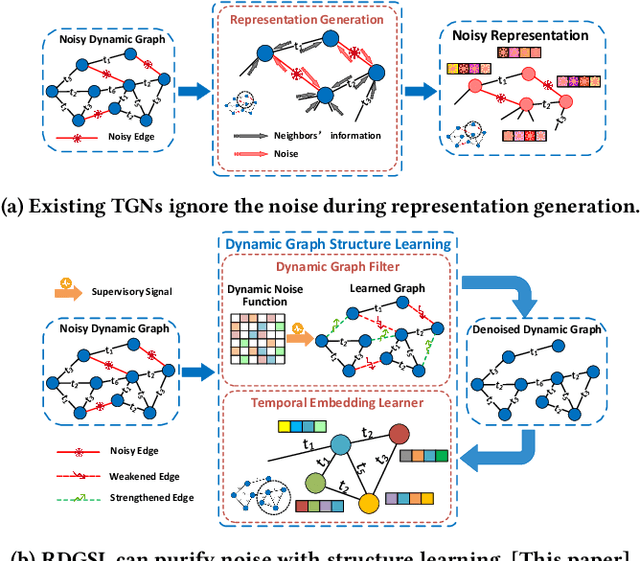RDGSL: Dynamic Graph Representation Learning with Structure Learning
Paper and Code
Sep 05, 2023



Temporal Graph Networks (TGNs) have shown remarkable performance in learning representation for continuous-time dynamic graphs. However, real-world dynamic graphs typically contain diverse and intricate noise. Noise can significantly degrade the quality of representation generation, impeding the effectiveness of TGNs in downstream tasks. Though structure learning is widely applied to mitigate noise in static graphs, its adaptation to dynamic graph settings poses two significant challenges. i) Noise dynamics. Existing structure learning methods are ill-equipped to address the temporal aspect of noise, hampering their effectiveness in such dynamic and ever-changing noise patterns. ii) More severe noise. Noise may be introduced along with multiple interactions between two nodes, leading to the re-pollution of these nodes and consequently causing more severe noise compared to static graphs. In this paper, we present RDGSL, a representation learning method in continuous-time dynamic graphs. Meanwhile, we propose dynamic graph structure learning, a novel supervisory signal that empowers RDGSL with the ability to effectively combat noise in dynamic graphs. To address the noise dynamics issue, we introduce the Dynamic Graph Filter, where we innovatively propose a dynamic noise function that dynamically captures both current and historical noise, enabling us to assess the temporal aspect of noise and generate a denoised graph. We further propose the Temporal Embedding Learner to tackle the challenge of more severe noise, which utilizes an attention mechanism to selectively turn a blind eye to noisy edges and hence focus on normal edges, enhancing the expressiveness for representation generation that remains resilient to noise. Our method demonstrates robustness towards downstream tasks, resulting in up to 5.1% absolute AUC improvement in evolving classification versus the second-best baseline.
 Add to Chrome
Add to Chrome Add to Firefox
Add to Firefox Add to Edge
Add to Edge